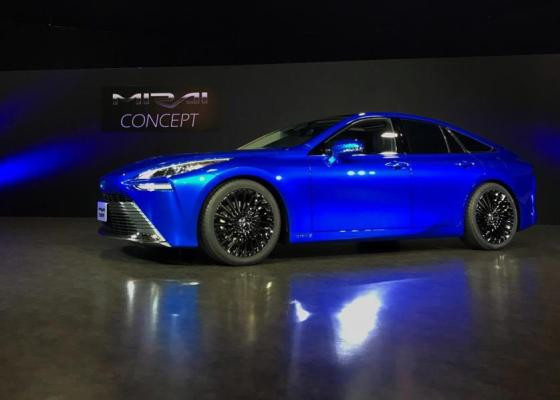Beijing's Ministry of Finance said that hydrogen fuel cell vehicles, which are believed to be the ultimate clean and emissions-free answer of the automotive industry, will not receive government subsidies anymore when China withdraws its financial stimuli by the end of next year.
A fuel cell converts the chemical energy of a fuel which is oftentimes hydrogen and an oxidizing agent, often oxygen, into electricity.
The ministry announced this pull out late last month when SAIC Motor Chairman Chen Hong, also a National People's Congress deputy, said that the central government's financial support should continue.
Subsidies for fuel cell vehicles have been granted since 2009 to stimulate new energy vehicles.
New energy vehicles include electric cars, plug-in hybrids and fuel cell vehicles.
The announcement of no more subsidies for fuel cells was met with surprise because over the past few years, the Chinese government only slashed the subsidies of electric vehicles and plug-in hybrids.
The ministry defends this decision saying that "Some carmakers have become over-reliant" and this led to difficulty competing in the global markets.
Also, in spite of financial support, "China's fuel cell industry has not made breakthroughs."
There are around 1,200 fuel cell vehicles in China with less than 20 hydrogen fuel stations when 2017 ended.
According to the International Hydrogen Fuel Cell Association, China is behind Japan, South Korea, and the United States when it comes to the number of fuel cell vehicles on the road.
The Chinese government is targeting to have 5,000 fuel cell vehicles running by 2020; 50,000 vehicles by 2025 and 1 million vehicles by 2030.
Yale Zhang, managing director of Shanghai-based consulting firm Automotive Foresight, said that China will take at least 10-20 years to realize its aim because developing hydrogen fuel cell vehicles need core technologies and supporting infrastructure.
Song Qiuling, a finance ministry official, confirmed that pure electric vehicles will be the mainstay of China's new energy vehicle initiative because fuel cell vehicles still have a long way to go.
Still, carmakers need heavy subsidies to bring down the price of fuel cell vehicles to the level of gasoline-powered cars.
Toyota's Mirai is just over 5 million yen ($46,200) after subsidies of 2.25 million yen, still about 50 percent more than a Camry.
Automakers are sure that once sales volumes increase, subsidies will not be needed anymore.
The ministry hopes that nonfinancial actions can be done "to facilitate" hydrogen fuel cells sale and hopes that local authorities come up with ways "to stimulate efforts to build and run hydrogen stations and other infrastructure."






